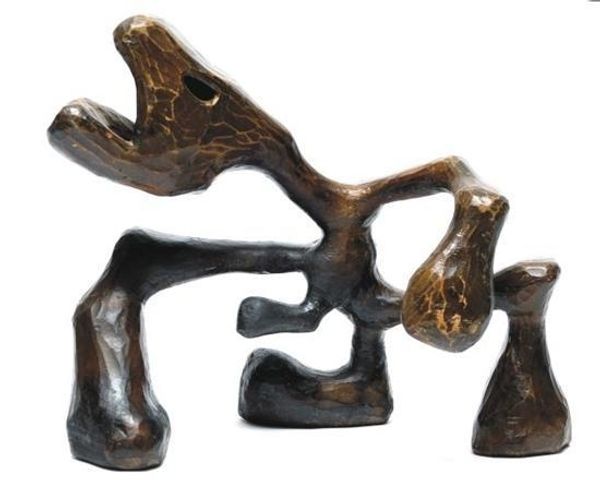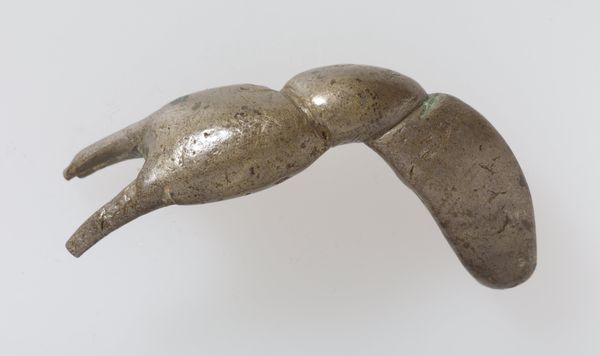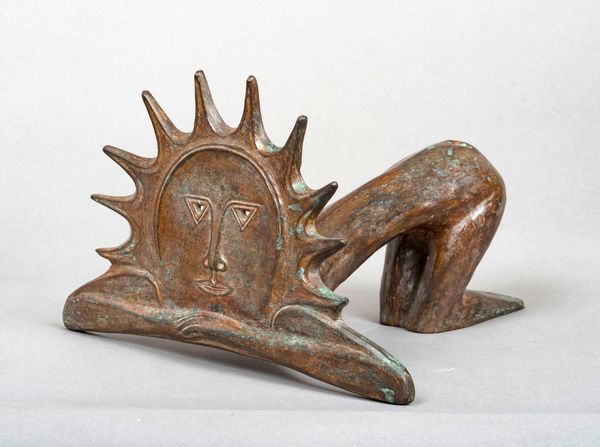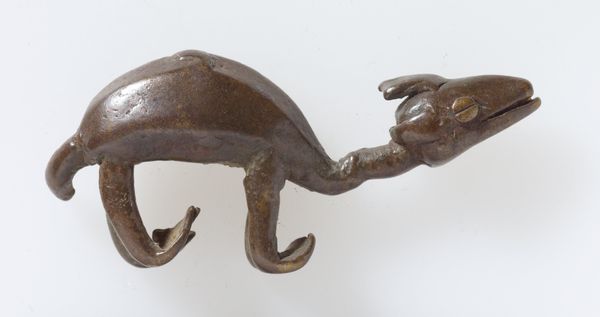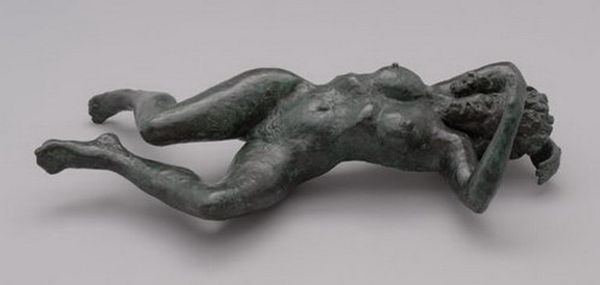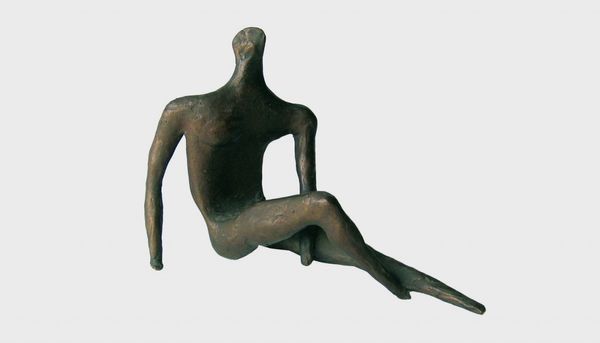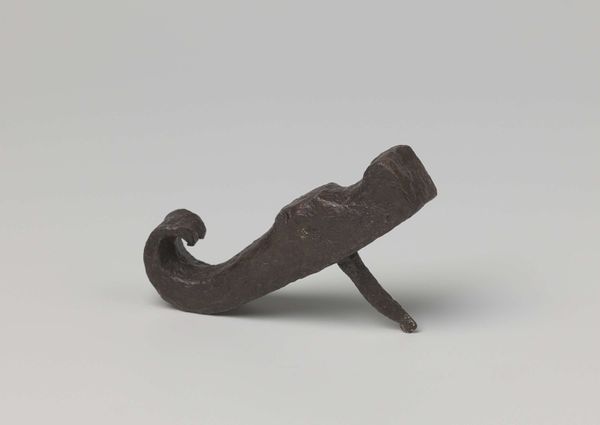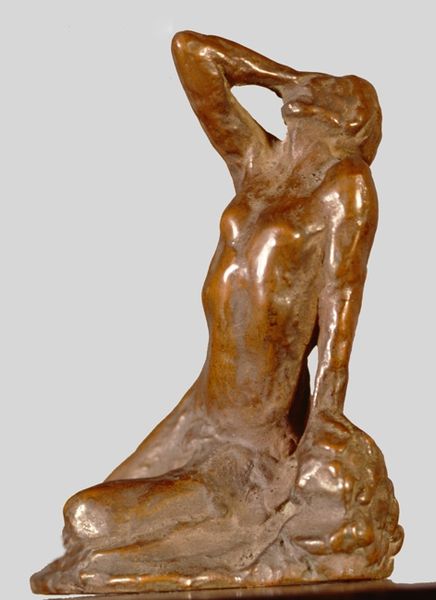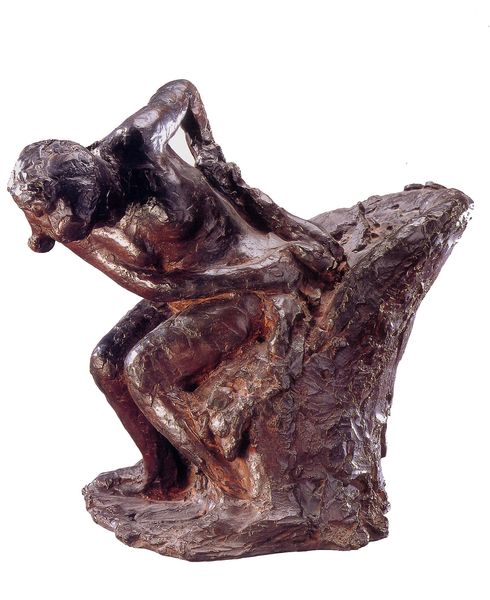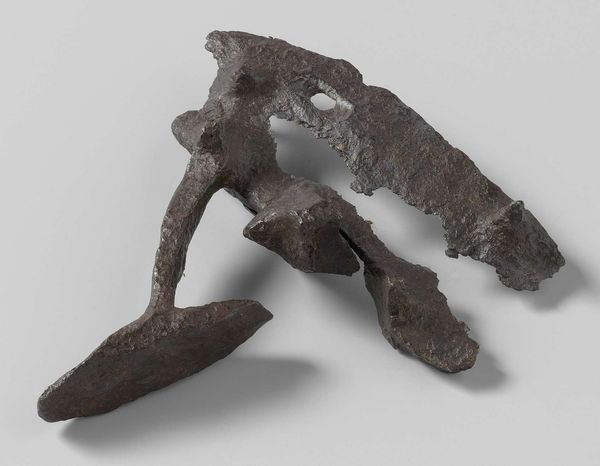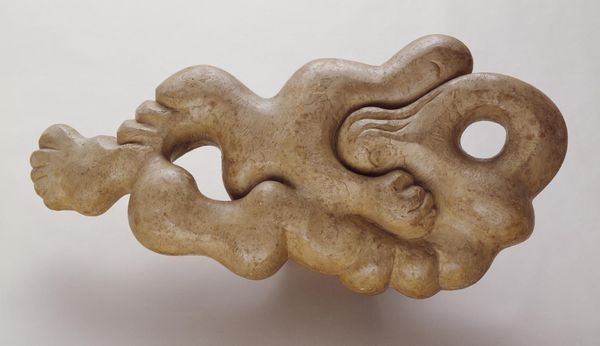
bronze, sculpture
#
sculpture
#
bronze
#
figuration
#
sculpture
#
modernism
Copyright: Henri Laurens,Fair Use
Editor: This is Henri Laurens' "Sirene," sculpted in bronze in 1938. I'm immediately struck by how the form is both figurative and abstract, and the bronze has this really interesting texture, almost rough. What do you see in this piece? Curator: The appeal lies precisely in the dialectic between representation and abstraction. Laurens has rendered a recognizable figure – the mermaid, or Sirene – but through simplified forms, focusing on the interplay of convex and concave shapes, the pure plastic values of the sculpture. Notice how the arms arc outwards, mirroring the curve of the tail, creating a sense of dynamic equilibrium. Editor: That's a great point. So you're saying the 'what'—a mermaid—is less important than the 'how'—the formal arrangement of shapes? Curator: Precisely. The bronze material is crucial too; its texture, the play of light and shadow across its surface, contribute to the overall aesthetic experience. Consider the semiotics of form: what does the smoothness of certain areas suggest, versus the roughness of others? Laurens manipulates texture to create a visually stimulating experience, separate from the mere representation of a mythological figure. Editor: So it's less about what the sculpture *is* and more about how it makes you *feel* through its composition and materials? Curator: In essence, yes. Laurens' mastery resides in how he uses formal elements to evoke sensation. This sculpture’s elegance doesn’t derive from literal imitation, but from the carefully balanced tensions between line, volume, and texture. Editor: That makes a lot of sense. I definitely have a deeper understanding and appreciation for this artwork now! Curator: I'm pleased to hear that. Sometimes, focusing on the raw sensory input is enough for a meaningful relationship with an art piece.
Comments
No comments
Be the first to comment and join the conversation on the ultimate creative platform.
